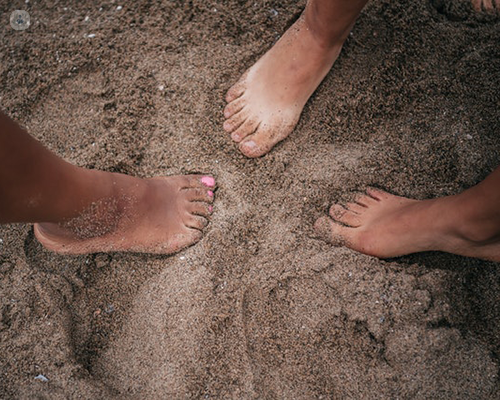Heel pain: The Big Three causes
Escrito por:Heel pain can be an irritating disruption to your normal routine and can prevent sufferers from enjoying an active lifestyle. Despite this being a common problem, most people are unaware of the causes behind it. In this article, we ask Mr Togay Koç, a highly esteemed consultant orthopaedic foot and ankle surgeon, to outline the causes of heel pain. He also gives expert advice on relieving heel pain at home.

What are the main known causes of heel pain?
Heel pain can be due to a number of causes but is most commonly due to degeneration in or at the insertion of the heel cord such as at the Achilles tendon, the largest tendon in our body or the plantar fascia (a structure that supports the arch of the foot). Typically, the pain from these conditions is bad with the first step out of bed, improves after this, but worsens with activity afterwards - if you do too much, you pay for it!
The Big Three causes of heel pain are plantar fasciitis, insertional and non-insertional Achilles tendinopathy but you may also hear them called other terms such as Haglund’s heel, pump bump, policeman’s heel or heel tendinitis.
In rare cases, degeneration of the heel cord and plantar fascia can lead to rupture. Although almost all ruptured heel cords and plantar fascia have some degree of degeneration, fortunately few people with degenerate heel cords or plantar fascia sustain a rupture.
What are some warning signs that heel pain could be related to a serious medical issue?
The cause of heel pain is rarely a serious underlying medical issue. Stress fractures may occur in endurance athletes or those with osteoporosis and presents as activity related pain with the duration of activity required until the onset of pain getting shorter over time.
Night pain is a feature that could indicate a nerve problem or an abnormal growth in or around the heel bone. Other tendons, ligaments or boney structures around the heel bone could also be the culprit. A thorough clinical examination with appropriate investigations will help to identify the cause(s) of heel pain and determine the best management plan.
With regards to heel pain, which home remedies work to help alleviate pain?
The “Big Three” conditions that can cause heel pain (non-insertional and insertional Achilles tendinopathies and plantar fasciitis), although painful in some patients, can be painless in others. Tendon and fascia degeneration is a normal part of ageing but we do not know why some people have pain and some do not.
The condition is self-limiting in that a degenerate painful tendon will eventually become a painless degenerate tendon, however, treatments may be required before this happens in order to reduce pain.
Tightness in the calf muscle, particularly the top calf muscle (gastrocnemius) is thought to play an important role in the biomechanics of these conditions. Stretching the calf muscle with the knee straight helps to improve pain.
The short term use of a small heel raise can be also helpful but in the long term will contribute to calf muscle tightness. Rocker bottom shoes can help reduce the implications of having a tight calf muscle and the resulting reduced ankle range of motion. If there is a significant amount of first step pain in the morning, a dorsiflexion night splint or Strassburg sock can help reduce this element of the pain.
For patients suffering from heel pain, what are the main dos and don’ts?
Do stretch your calf muscle with your knee straight. Do remain active within limits of comfort and avoid becoming sedentary.
Do be reassured that, once serious medical issues are ruled out, the “Big Three” may be painful conditions but are not serious conditions.
Do not gain weight; increased body weight means more stress is put through the tendon and potentially more pain. Individuals who reduce body weight report less pain.
What is the most effective treatment option for heel pain?
The treatment of heel pain is tailored to its cause and duration as well as the treatments that have been previously tried and their effects. The treatment plan will be bespoke to each individual patient but generally starts with stretching and strengthening exercises, usually with the guidance of a physiotherapist. Splints, heel raises and insoles may have a role in treatment.
If these measures are not effective, shockwave treatment or various injections may be useful. Finally, if all else fails, surgery may be required to attempt to improve pain, however this can come with a lengthy recovery period and brings with it the risk of surgical complications which can, in rare cases, be life or limb threatening or debilitating. Unfortunately, no treatment or surgery has a one hundred per cent guarantee of removing or improving pain completely, however most patients have an improvement in their pain with no serious complications.
If you are experiencing heel pain, you can book a consultation with Mr Koç to discuss your symptoms by visiting his Top Doctors profile.


